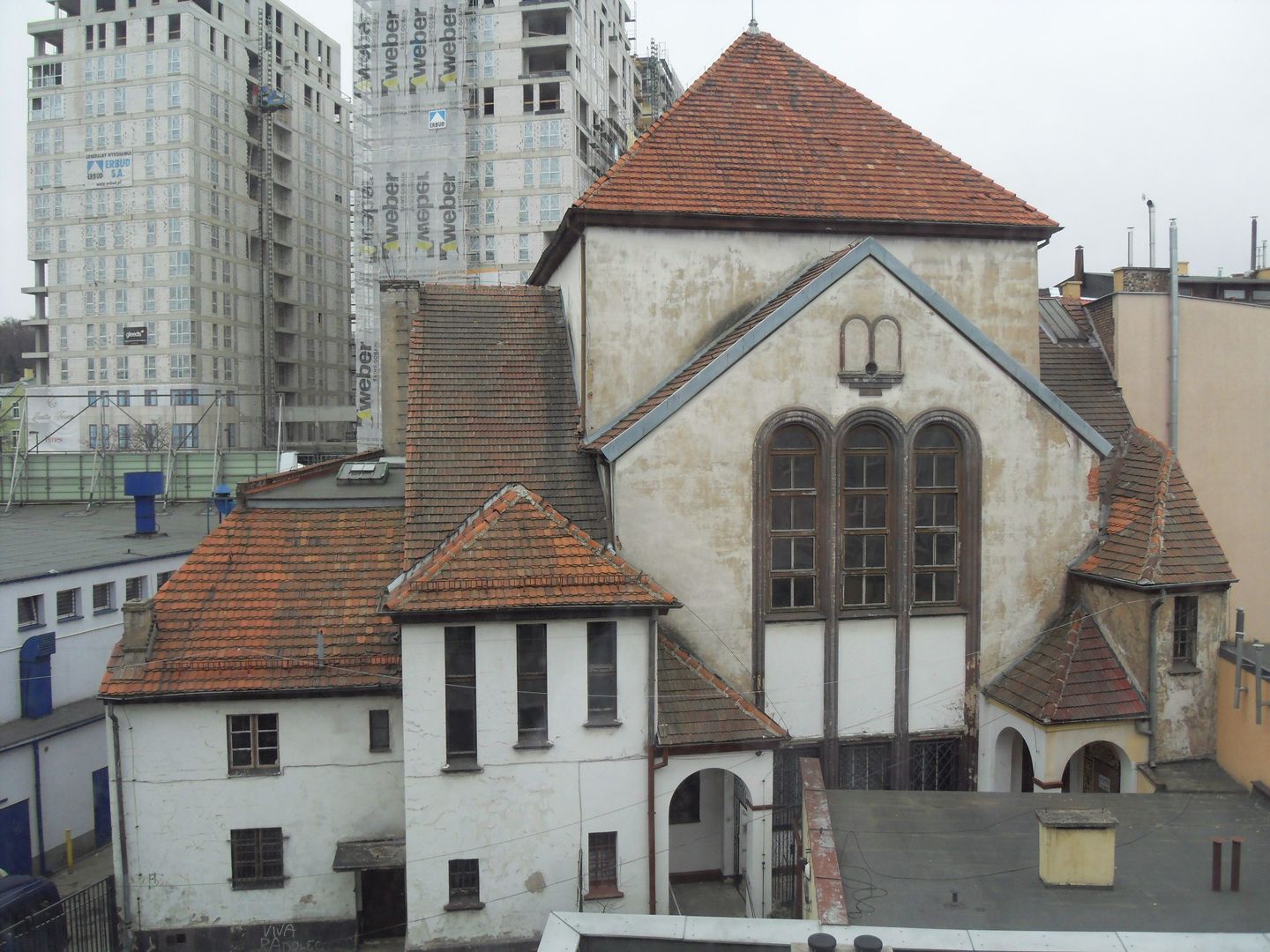New Synagogue in Gdańsk-Wrzeszcz
6.13

Overview
The New Synagogue in Gdańsk-Wrzeszcz, located at 7 Partyzantów Street, is the only preserved free-standing synagogue in Gdańsk. Its history dates back to the 1920s, when an influx of Jewish refugees to the Free City of Danzig sparked initiatives to build a new house of worship. After several years of efforts, the cornerstone was laid in 1926, and the synagogue itself was opened on September 25, 1927. It was designed in a modernist style by architects Imberg and Friedmann, featuring a distinctive hipped roof instead of a dome—an innovative solution at the time. The building was generously equipped and could accommodate worshippers as well as a women's gallery. Historical events, such as Kristallnacht in 1938, had a tragic impact on the synagogue, leading to its destruction. During World War II, the building was converted into a carpentry warehouse, resulting in severe damage. After the war, the synagogue was returned to the Jewish community, but in 1951, due to the mass emigration of Jews from Gdańsk, it ceased to serve its original function. In 2002, a dispute over the rights to the building ended with the Union of Jewish Religious Communities in Poland being granted ownership. In 2007, the synagogue was visited by Nobel laureate Günter Grass. Today, one of its rooms houses a small synagogue where services and Jewish community gatherings are held. The interior of the synagogue, despite its transformations, still reflects its original religious function, with the Aron ha-kodesh surrounded by symbols of Judaism. The New Synagogue, a witness to the changing fortunes of the Jewish community, remains an essential element of Gdańsk's cultural mosaic.
Location
Tickets
Powered by GetYourGuide
2025 Wizytor | All Rights Reserved